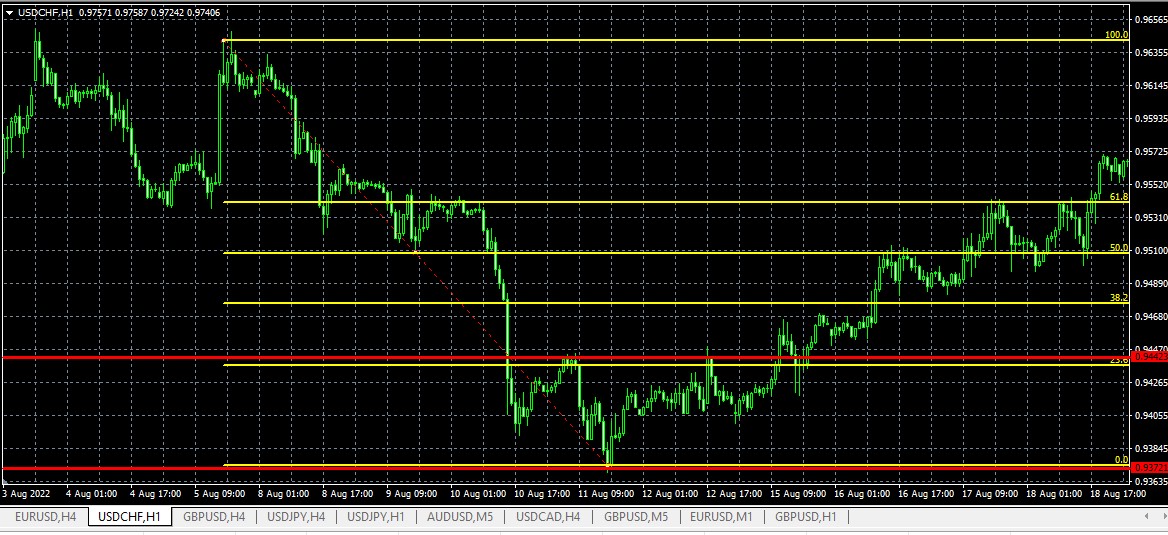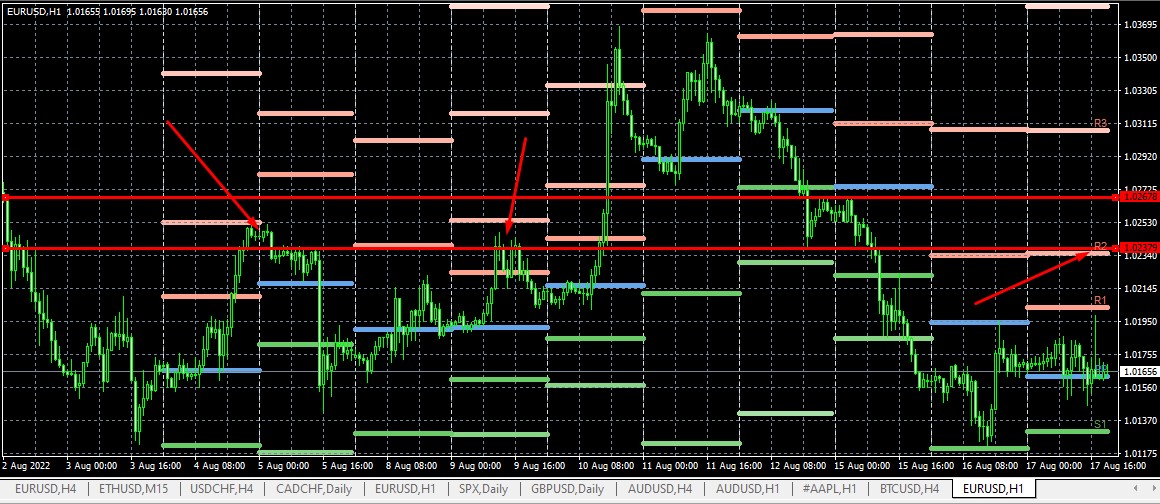Indicators for determining the boundaries of supply and demand zones
- George Solotarov
- Hits: 420
Fibonacci levels. Price often lingers between intermediate Fibo levels during a correction - they can act as zones.
In this example, the Fibo levels on the downtrend showed a demand zone. The price retested the near level, failed to return to the far one, and then went upwards after the breakdown of the near level. According to the following Fibo levels, you could also draw local zones.
Pivot levels. A tool for determining possible reversal levels. Classic points show three resistance levels and three support levels, the significance of which increases as you move away from the current price value. The demand zone can be built between the 2nd (S2) and the 3rd (S3) support, and the supply zone - be between the 2nd (R2) and the 3rd (R3) resistance.
Early Pivot levels can also indicate anticipated zones, but it is better to be guided by current levels. The last level R2 shows the near (lower boundary) of a possible supply zone. It makes no sense to set the far border on R3, it is more logical to do it on the last short-term consolidation zone of the downtrend. Note: the constructed zone captured two good reversals on the left side of the chart. This confirms that the zone is strong enough and that a new temporary consolidation or reversal down here is possible.
Oscillators. They confirm a possible reversal. We can build zones based on the coinciding reversal of the price and the oscillator in the overbought/oversold ranges. Or you can receive a confirmation signal from the oscillator when the price will already be in its zones.
You can also use trend indicators to identify supply and demand zones, but they show better the moment of exiting these zones.
How to use zone patterns in trading:
- Finding trade opening points. Zones can be regarded as a section of a temporary flat, the exit from which is on one or the other side. The signal is necessarily confirmed by other instruments.
- Setting Take Profit and Stops. Assuming that in the zones there is a struggle between buyers and sellers, then it would be logical to put stops outside the zone, and the transaction should be closed before the price enters the zone.
- Do not forget to consider the fundamental factor. For example, in the demand zone, in theory, there is an increased demand from buyers, which should turn the price up. But the release of news can change their minds and the downtrend will only increase the speed.
___________
Also, if you want to use all available trading tools to increase your profits as soon as possible - follow this link below, or contact us via live chat. Our experts will help you to choose the best strategy for success.
Follow our updates for useful information in our series of articles.

